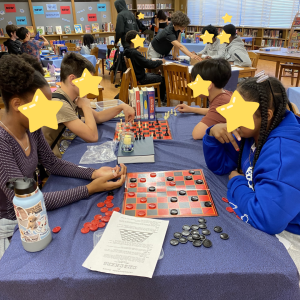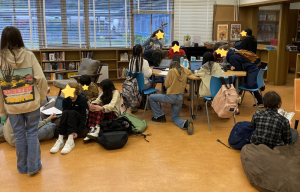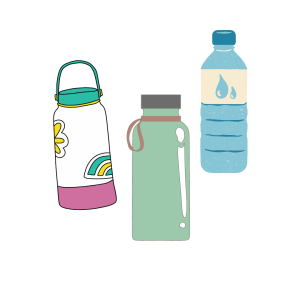Assignment X: But we’ve always done it this way
Throughout our foundational readings and explorations, I keep thinking about two ideas. First, Brian Mathews writes that “libraries are about people, not books or technology” (Mathews, 2012, p. 10). Second, Michael Stephens talks about the internal challenge that libraries and librarians face of “we’ve always done it this way” (Stephens, 2019). While these two ideas might not initially seem connected, in my library world they are connected in a way that challenges me to embrace change and become a “future-oriented librarian” and not one who is stuck in my old ways all of the time (Mathews, 2014, p. 9).
When I first began working in a public middle school library with over 650 students to attend to, I knew that the initial goal was to create a safe and welcoming space for students to check out books, read, and relax. The library had been closed for several years so there was little expectation for additional services. The secondary goal was to build up a reading culture in our school community. While books were certainly a crucial resource to use to achieve goals, I quickly learned that students were the primary resource of the library. Yes, my role was to provide them with relevant and current books to read, but it was also to support them emotionally, academically, and socially. The safe and welcoming space is what they appreciated as much (if not more) than the books. To help justify this claim, I was thrilled to discover supporting evidence in a study conducted in Australia by Margaret Merga (2021) (along with a number of other articles related to school libraries that I plan to explore later!).
Over time, the school community (and our world) has changed and the services provided by my school library have shifted as well. Many of these changes have been positive as the library has become a thriving community space in our school and the services offered are more extensive than just book check out and a place to hang out at lunchtime.



Upon reflection, however, I think that I have been primarily reactive to the changes and not always proactive in developing new strategies. Brian Mathews explores some of the challenges librarians face and encourages us to “focus on the factors driving change” in his article Librarian as futurist: Changing the way libraries think about the future (2014). He advocates for us to change the way we think about challenges and problems by being curious and not negative. Mathews’ focus is on academic libraries but the lesson applies to school libraries as well. What does the future hold for my school library? How has my school community changed and how should the library services react to those changes? How can I be more curious about what my students need? How can I be more curious about changes that I can make to improve their library experiences? These are questions that I hope to explore as this course progresses.
I would like to bring this post back to the internal challenge that Michael Stephens discusses in his Hyperlinked Library Model lecture: “We’ve always done it this way” (Stephens, 2019). At a very minimal level, I plan to implement one change in my school library next week. For the past 8 years there has been a steadfast rule of no eating or drinking in the library. This rule exists to protect the books from being damaged by spills and because middle school students don’t always clean up after themselves (surprise!). But I find myself repeatedly asking students to put away their water bottles. If I evaluate this daily/hourly interaction, I realize that there is little to be gained by my insistence on their compliance. We encourage our students to stay hydrated and almost all of them carry a water bottle with them at all times. To be honest, most of the damage to books occurs when something spills in their backpack. While I will still maintain the rule about not eating in the library (please trust me on this one!) allowing students to drink in the library seems like a welcome change.

Allowing students to bring beverages into the library may seem like a “baby step” towards change but it’s a starting point for me to re-evaluate the expectations that I have of students in the library. It’s a starting point for me to be curious and not negative when students repeat the same behaviors after multiple admonishments. It’s a starting point to remind myself that the library is all about people who will have a better library experience if I embrace change and work toward a better “future” library. As the popular library blogger Kelsey Bogan says in her Don’t Shush Me! blog, “It’s about community, not control.”
References:
Bogan, K. (2021, August 2). Dealing with discipline in the h.s. library Don’t Shush Me!
https://dontyoushushme.com/2021/08/02/dealing-with-discipline-in-the-h-s-library/
Mathews, B. (2014). Librarian as futurist: Changing the way libraries think about the future. Portal, 14(3), 453–462. https://doi.org/10.1353/pla.2014.0019
Mathews, B. (2012). Think like a start up: A white paper to inspire library entrepreneurialism. http://hdl.handle.net/10919/18649
Merga, M. K. (2021). Libraries as wellbeing supportive spaces in contemporary schools. Journal of Library Administration, 61(6), 659-675. https://doi.org/10.1080/01930826.2021.1947056
Stephens, M. (2019). Hyperlinked library model [Video lecture] https://sjsu-ischool.hosted.panopto.com/Panopto/Pages/Viewer.aspx?id=a0569381-4d66-4e0a-a7fa-aab3010a8f3e
2 Comments
Ciera
Hi Maggie, I appreciate how much of your own experience and reflection you bring into this library post. It’s really exciting to see how students have taken ownership of your library space for such a wide variety of activities. I’m inspired to see how your library has been able to activate young people to bring their own interests into the space as much as learning from you- kudos! I hope that you keep us updated on your journey making adjustments to your practice this semester, I would love to hear more.
Maggie Rogers
Thanks Ciera! It’s really fun to learn what students are interested in doing in the library. I think about that in relation to one of the articles we read (but I can’t remember which one!) where a university library was being remodeled and the entry area was empty of furniture so students just re-arranged what was in the library (and perhaps brought in bean bag chairs and pillows?). They made a space that was useful to them even if it wasn’t the intent of the architect and planners! I plan to stay open to ideas from my students and find new ways to enrich a middle school library space.